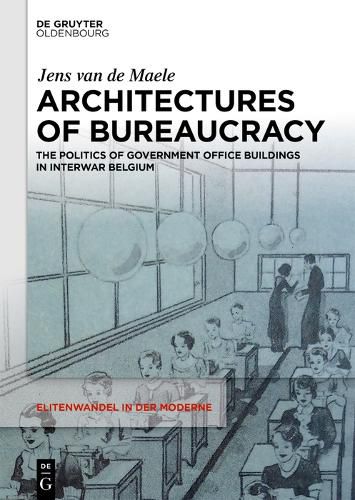Readings Newsletter
Become a Readings Member to make your shopping experience even easier.
Sign in or sign up for free!
You’re not far away from qualifying for FREE standard shipping within Australia
You’ve qualified for FREE standard shipping within Australia
The cart is loading…






This monograph examines the interrelationship between politics and modernist architecture in interwar Belgium, focusing on political, architectural, and administrative elites as propagators of new ideas of governance. While Belgium was strongly influenced by neighbouring France and Germany, it also developed its own avant-garde approaches to socio-political problems. In the second half of the 1930s, the country was the scene of a remarkable political and architectural experiment involving an ambitious plan for the large-scale construction of modernist government office buildings. These buildings were seen as essential to the development of a technocratic model of governance, aimed at strengthening the role of the executive and minimising the influence of parliament. More specifically, the "efficient" new office architecture was supposed to create a new type of "perfect" civil servant, whose loyalties would no longer lie with political parties, but with scientists and management experts. Such experts and scientists constituted a rising elite of homines novi with strong (though often veiled) political ambitions. As such, this book contributes to our understanding of political culture in the "age of extremes".
$9.00 standard shipping within Australia
FREE standard shipping within Australia for orders over $100.00
Express & International shipping calculated at checkout
This monograph examines the interrelationship between politics and modernist architecture in interwar Belgium, focusing on political, architectural, and administrative elites as propagators of new ideas of governance. While Belgium was strongly influenced by neighbouring France and Germany, it also developed its own avant-garde approaches to socio-political problems. In the second half of the 1930s, the country was the scene of a remarkable political and architectural experiment involving an ambitious plan for the large-scale construction of modernist government office buildings. These buildings were seen as essential to the development of a technocratic model of governance, aimed at strengthening the role of the executive and minimising the influence of parliament. More specifically, the "efficient" new office architecture was supposed to create a new type of "perfect" civil servant, whose loyalties would no longer lie with political parties, but with scientists and management experts. Such experts and scientists constituted a rising elite of homines novi with strong (though often veiled) political ambitions. As such, this book contributes to our understanding of political culture in the "age of extremes".